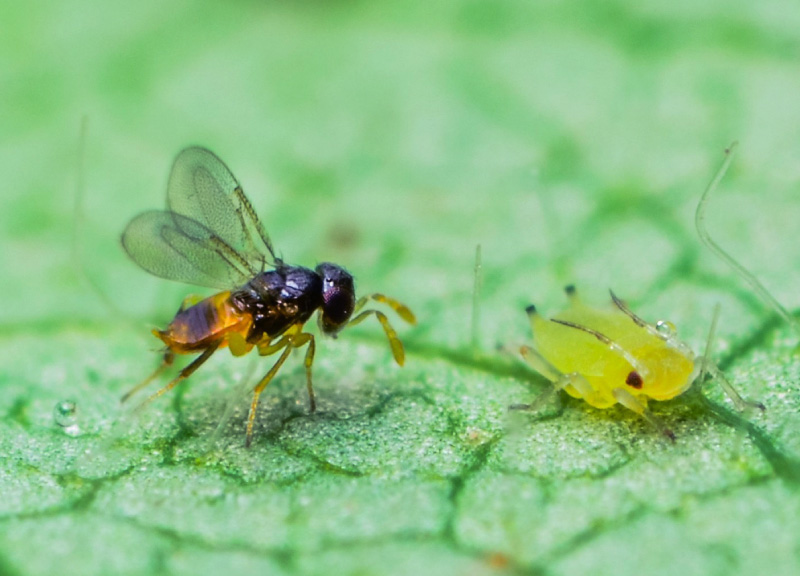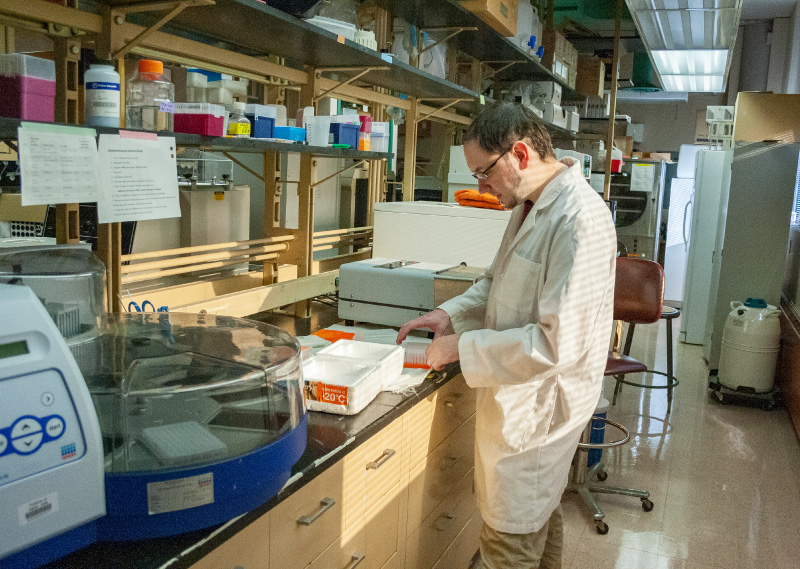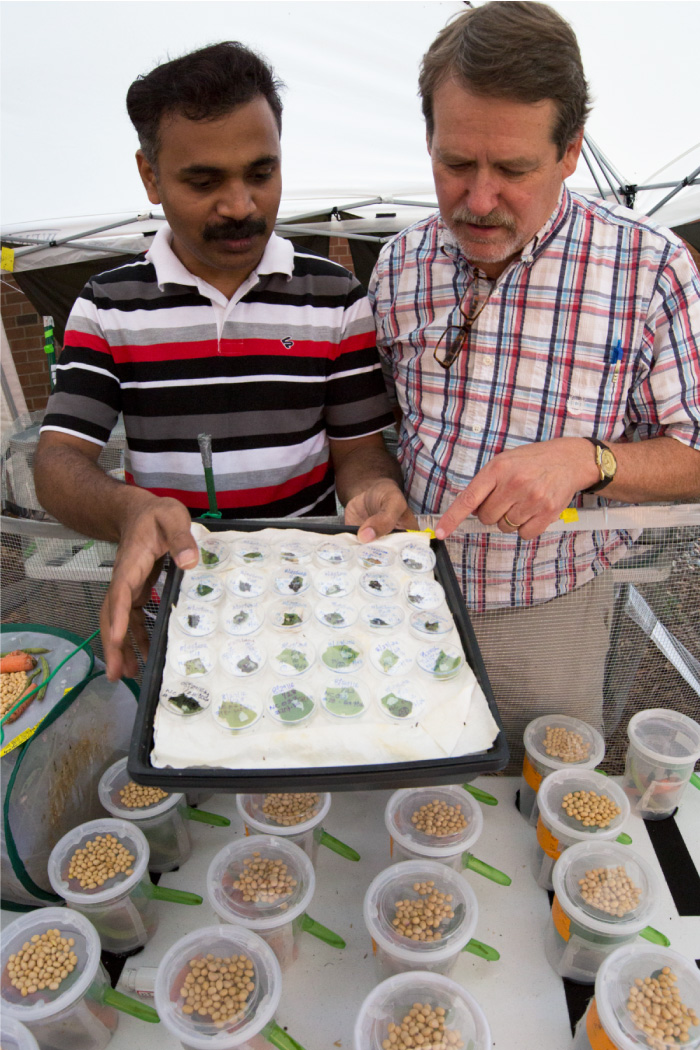January 8, 2019
by DANA D'AMICO | Communications Specialist, MITPPC
The Minnesota Invasive Terrestrial Plants and Pests Center (MITPPC) helps soybean growers protect their crop, prevent invasive pests and minimize threats to plant health.
The Minnesota Invasive Terrestrial Plants and Pests Center (MITPPC) delivers science-backed solutions to Minnesota's biggest invasive species threats – including soybean growers’ real-world pest problems. Our world-class researchers work with growers across the state, merging perspectives from lab and field. Together, they‘re aiming to put a stop to tough, yield-robbing threats like palmer amaranth, soybean aphid, brown marmorated stink bug, buckthorn and sudden death syndrome.
MITPPC has committed to supporting only the most promising applied research projects. We remain the only university-based invasive species center in the country with significant funds dedicated to research, thanks to support from the Minnesota legislature and the Environmental and Natural Resource Trust Fund (ENTRF). Collaboration with the Minnesota Soybean Research and Promotion Council helps us connect growers with the latest advancements in practical, cost-effective pest control.

The parasitic wasp Aphelinus certus can kill soybean aphids with its sting. MITPPC researchers are exploring whether wasp populations can suppress aphid feeding and reduce insecticide use.
A perfect storm: soybean aphid and buckthorn
Soybean aphids have become a destructive force in Midwestern fields since invading in 2000. Aphids overwinter in another hard-to-control invasive species — buckthorn. MITPPC researchers are tackling the problem from both sides. Some teams are exploring new aphid control options, from biological control of soybean aphids with parasitic wasps to naturally aphid-resistant soybean lines.
Other researchers are focusing their efforts on buckthorn. Among the innovative methods of control being tested by MITPPC scientists: planting native species to outshade buckthorn seedlings and using grazing goats, who have quite the appetite for the invasive plants.
Staying ahead of palmer amaranth
Palmer amaranth is an aggressive weed that has already developed resistance to several major herbicide classes. MITPPC is funding studies to forecast the expansion of palmer amaranth in changing environmental conditions so growers can stay ahead of the threat. MITPPC is also exploring new ways to keep palmer amaranth seeds out of seed mixtures for conservation plantings.
Staving off sudden death
The invasive fungus Fusarium virguliforme can cause soybean sudden death syndrome and root rot. MITPPC researchers are trying to better understand how the fungus spreads and how infection is able to trigger diseases like sudden death.

MITPPC-funded researcher Anthony Brusa begins the process of genetically analyzing Palmer amaranth seeds. His project aims to improve current tools for identifying invasive Palmer seeds in native seed mixes.

William Hutchison and Byju Govidan study a recent invasive insect pest, the brown marmorated stink bug (BMSB). It can cause significant damage to soybean fields. BMSB was first detected in the U. S. in the mid-1990’s and in Minnesota in 2010. But it was 2016 before it was found in soybeans in the state.
Smart(phone) stink bug management
The brown marmorated stink bug has cost Mid-Atlantic farmers millons in damages. These stink bugs were found in Minnesota in 2010, and have been found in soybeans — though not yet at damaging levels. MITPPC researchers are looking to ward off future damage by establishing early detection protocols and developing resources to help growers scout and manage the pest in their fields. One such tool is the free “Midwest Stink Bug Assistant” smartphone app to help growers easily identify the pest.
Stay up to date on the latest soybean research
MITPPC funds new projects regularly and posts updates here on our website. Please check back for the most up-to-date information on invasive soybean threats, or follow us on social media and sign up for monthly email news roundups.